Today we will learn to care for a fairly common home plant - Begonia Makhrova. Despite the seeming simplicity of cultivation, the begonia has their own nuances, and if you want a plant to be great and pleased you for a long time, be sure to listen to recommendations and create optimally comfortable conditions for the plant.
Begonia Description Mahova
Begonia Makhrovna is a popular house plant of a decorative species, with brilliant green or reddish leaves, which is distinguished by violent abundant blossom. In the people, Begonia is also called "Maiden Red". This plant rightfully deserves the name of the domestic queen.
Begonia may have a shape of a busta or ampel, depending on the species, almost all types of blooming begonias on the flowers are formed by 2 types of same-sex colors: men's and female. Machery male flowers, female simple. On women's flowers subsequently formed a seed box.
As a rule, begonias bloom throughout the summer, but there are also blooming in the fall and in winter, such as the ever-flowing begonia of terry. She begins to bloom in the spring and finishes late in the fall, and often blooms throughout the year. The leaves in such plants do not die for the winter.
Begonia terry is grown in the apartment, house, in the summer, the garden or the countryside, the balcony is decorated with begonias, but the place must be chosen in priented and low, since the strong wind will damage fragile plants.
Types of Begonia Makhrovykh
By the nature of the underground part of Begonia, terry are tuber and busy. The above-ground part of the plants also differ, some begonias grow in the form of a cookistic vertically, and others are ampel.
The largest and most beautiful flowers come from the tuber begonia, their size varies from 1.5 cm to 15-20 cm. Colors color such a begonia is a red, white, yellow. Flowers are possible with different color from the petals. Sometimes the flowers begonia have an aroma.
Ampel Begonias are attractive because they, like other ampel plants, have the ability to freeze, capable of taking out support or grille. They bloom very abundantly, although the size of the colors is not so large as the bush plants. There are large-flowered species with a color size of 10-15 cm and small-bedrooms - up to 5 cm. Basically, they bloom in spring, but some varieties bloom and in the summer.
Most ampel begonias are white or pink flowers. Most convenient ampel plant species grow in suspended pots and baskets.
Caring for Begonia Makhrova
Temperature mode
In the summer, begonia is grown at room temperature, although it does not tolerate the temperature above 25 ° C, moreover, when placing a plant, it is worth avoiding direct sunlight. In the cold season for unfading begonia, the room temperature is maintained at 15 ° C. Begonias love fresh air, it is recommended to regularly air the room, but do not have a plant on drafts.
The tubes in winter are at rest, this period lasts 3-3.5 months. Tubers are stored at a temperature of 10-12 ° C in the sand or peat, which occasionally moisturizes to prevent tubers drying.
Watering and humidity
In the hot season, the plant requires abundant watering. Water begonia twice a week, and it is impossible to allow stagnation of water in the ground. By winter, watering is gradually reduced to 3 times a month, this is enough, since in winter the vegetation of the plant is suspended and he needs less moisture. Watch that the soil does not swam, especially if the plant is placed near heating radiators.
Begonias love wet air, but it is not necessary to spray it with water, it will not affect the health of the plants and causes the appearance of ugly brown spots on the leaves. For dry air moisturizing, water sprayed indoors, the plant itself is placed on a pallet with a wet clay.
Fertilizer
During the vegetation and abundant flowering, the plants feed 1-2 times a month with special complexes of mineral fertilizers for flowering plants.
Soil for begonias
For planting begonias, a slight crumpled fertile soil is suitable, containing peat, humid, turf and leafy ground. Special prepared primer for begonias for sale. At the bottom of the pot necessarily have drainage.
Transfer
For the cultivation of Begonias, clay pots are best suitable, the walls of such pots porous, it will provide air access to the ground and will prevent bearing. For ampel begonias pick up small and wide pots.
The landing of the Mahrew Begonias to the new soil is produced in early spring, if necessary, pick up a pot of larger. Replanted recommended once every 2 years, tuber - annually after resting period. Over time, the plant loses its decorative appearance, so it is updated by shifting.
Trimming
Begonia Terry with a bush form of the aboveground part needs regular trimming. With the help of trimming, a beautiful appearance of the plant is formed, rejuvenation occurs. Pruning is made only with a sharp knife. When the stem of a young plant reaches 10 cm, the top pinch, and the plant begins to form lateral shoots. When the lateral shoots reach 12 cm, they also pinch them. Next, they follow the appearance of the plant, giving it the required shape, removing damaged and dry stems.
Ampel begonia is cut as needed to give a beautiful appearance.
Reproduction of Mahova Begonias
Shining
The simplest and most common way to reproduce all types of begonias Makhrova - shifting. Optimal time - April-May. To do this, with a sharp knife, a healthy, strong stem is 10-12 cm long, release it from the lower leaves and placed in water. For a more reliable result, "Korniner" is added to the water according to the instructions. After the appearance of the first roots, the young plant fell into a suitable pot with a light peat mixture and control the humidity of the soil.
You can immediately carry a cutter into the nutritional soil, as a rule, after 4-5 weeks of the cutlets are rooted. The most suitable temperature for the root formation process is 20-22 ° C. In reproduction, a new plant receives all signs of a parent plant.
Team breeding
Conglave begonias except for black assistance can be propagated by fissioning tubers. Have a good tuber from three to seven kidneys.
Preparation and landing of tuber begonias:
- The tubers are laying out the bottom side of the wet gauze or soil and are kept in warmth and in the light. When roots will appear on the convex part, the young tubers are time to plant.
- For prevention purposes, Fungicide Begonols are treated.
- They lay out the convex side to the wet primer and gently fall asleep space around, the upper part of the tuber should remain uncovered. The top of the tuber is located there, so that it is below the edge of the pot on 2-3 cm.
- After the appearance of sprouts, the tuber falls asleep completely.

Reproduction of seeds
The most time-consuming method of breeding. Sowing seeds are made in January, but in order for shooters to have fully developed and bloomed in the same year, extend the day with the help of artificial illumination for 4-5 hours daily until the beginning of April. To obtain plants from seeds you need:
- pick up the container, pour drainage and soil into it;
- seed seeds, sprinkle the earth a little, shallow palm;
- create greenhouse conditions: cover with film, temperature 22-25 ° C, daily ventilation;
- after 2 weeks, the first shoots will appear, at this time it is time to organize the backlight.
Diseases and pests Begonia Makhrova
- Puffy dew is manifested by the appearance of white plated on the leaves of the plant. The development of the disease contributes frequent temperature differences, increased humidity, drafts. The plants in the outdoor are more often ill. Fungicides will help to stop the disease, the plant is better to process outdoors.
- Gray rot is manifested by the appearance of mold on the leaves of the plant. As a rule, it occurs in the cheese cold room with insufficient ventilation. Sick leaves must be removed, the plant is treated with special drugs.
- A web tick lives on the bottom side of the leaf of begonias. The lesion indicates the appearance of a thin cob. To combat pests, the plant must be treated with insecticide.
- TRU, as a rule, attract ants to the plant. To combat TLI, drugs with a pyrethrum will be suitable, but the plant is processed daily to complete recovery.
Other problems not related to pests are possible. If the plant leaves pale, then, most likely, the begonia is not enough light. Move the pot with a plant to a more illuminated place. If the leaves dry the edges, then they fall, and the buds dry, then the reason is insufficient watering of the plants, low humidity in the room.
Begonia Terry: Photo
Begonia Machirovy Red
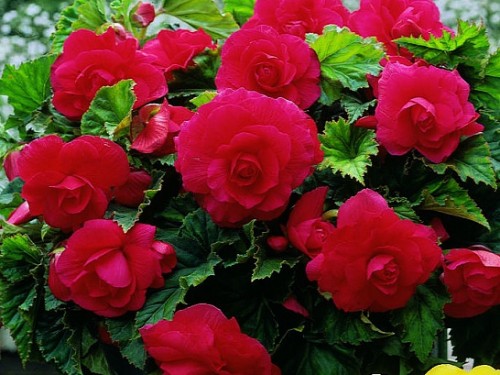
Begonia Mahova Yellow
Begonia terry white
Knowing all the main points of cultivation of the Gaughty plants, you can make the right content of your plant, and get new, young begonias from the parent plant. Bright elegant colors will greatly decorate your home, and in the warm season and the garden.

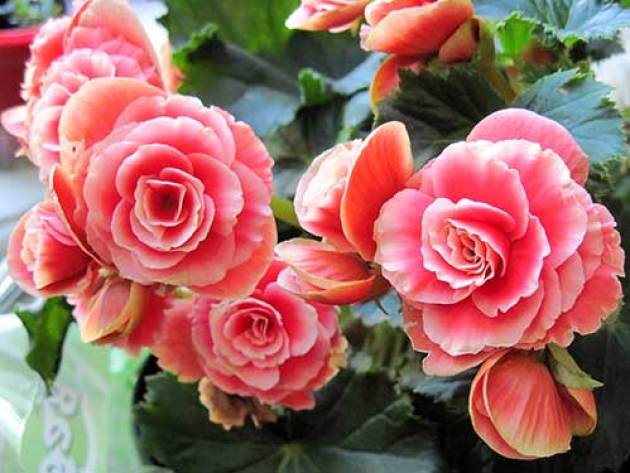
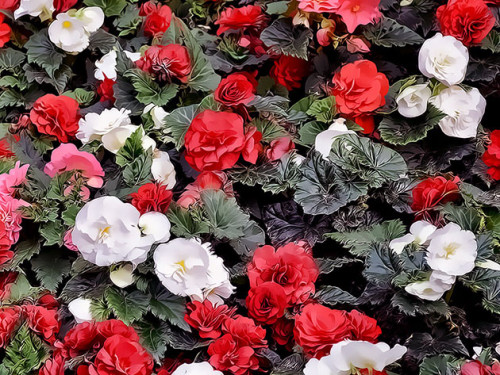

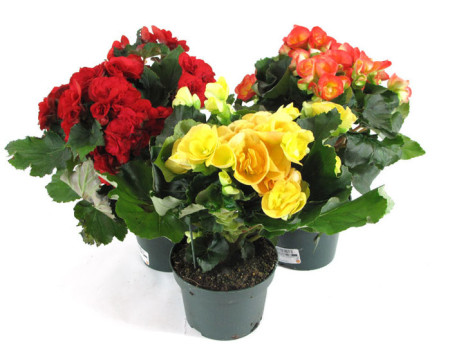
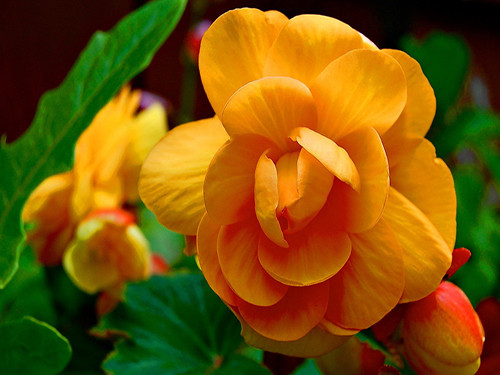
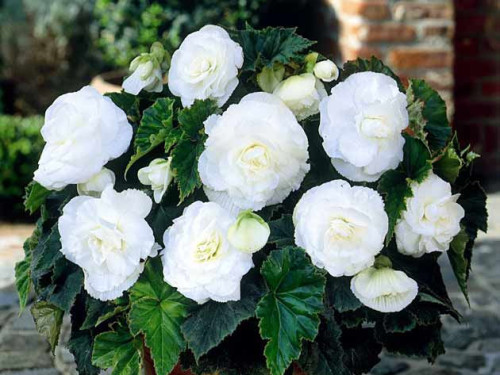












 Start a discussion ...
Start a discussion ...